Business built on quality service
Same-Day Emergency Service
We offer free inspections and estimates to residential and commercial customers

Learn About Pests
Free Estimates | Same-Day Emergency Service | Since 1996
Hours:
Get to Know More About Certain Pests
Sand Mountain Pest Management has locations in Albertville, Anniston and Oneonta, AL. We deal with a wide range of pests. We have provided some helpful information below about different pests and what you can expect from them.
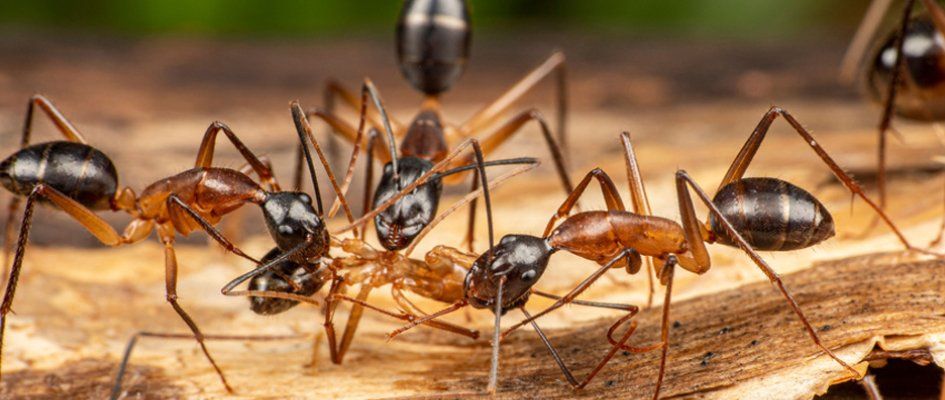
Ants
Their Life Cycle
Ants are social insects. They live in colonies in which one or more queens produce eggs. The eggs hatch after a few days into small larvae (immature forms) that are cared for by worker ants. After a few weeks the larvae spin a cocoon to pupate. The pupal stage is when the ants change from their larval form to an adult. When they emerge from the cocoon, most ants will be workers. Normally after a colony is several years old, some of the new adults will have wings. These flying ants are called swarmers. Swarmers fly away from their home colony, mate, and find a suitable location to begin new colonies. Ant swarmers can be found throughout the year when temperatures are mild, but usually they are observed in the spring and summer. Unfortunately, ant swarmers are sometimes confused with termites. Winged termites are also often referred to as swarmers. Swarmer ants and termites can be easily told apart by looking for a few obvious characteristics. Ants have elbowed antennae (antennae with a bend), while termites have straight antennae. Termites have a broad waist between the thorax (chest) and abdomen, while ants have a slender waist. Termites have four wings of equal length, while ants have wings of unequal lengths.
Habits
Ants enter buildings in their search for food. Most ants feed on the same foods that humans do. Some types of ants are attracted to greasy foods, while others prefer sweets. Whichever type they are, when workers locate the food that their colony likes, they will lay down a chemical signal as a trail for other workers to follow to the source of the food. This is why large numbers of ants can be observed in the same spot.
Control
Effective ant control requires a multifaceted approach that includes a combination of habitat alteration and toxic baits or sprays.
Habitat alteration means changing the environment so that it is less appealing to the worker ants. This can include simple changes, like storing food in sealed containers, keeping fruit in the refrigerator, washing dirty dishes and keeping countertops clean. Other changes may take more effort, like caulking around windows and doors, having adequate screening and reducing outdoor sites where ants can have colonies.
Toxic baits and sprays are good tools to use for ant control. Ant sprays applied to cracks and crevices will help control ants for a short time. Never spray entire floors, walls, counter tops or the insides of drawers or cabinets. The most effective control will be achieved with the use of toxic baits designed for ants. Worker ants will feed on the bait and take it back to share with the rest of the colony. Because the baits are slow-acting, the workers have enough time to return to the colony to feed others before they die. Ant baits are available in small stations and can be purchased from most discount and grocery stores. Place ant bait stations where you can see ants but away from children and pets. Bait stations should not be sprayed or moved when ants are feeding.
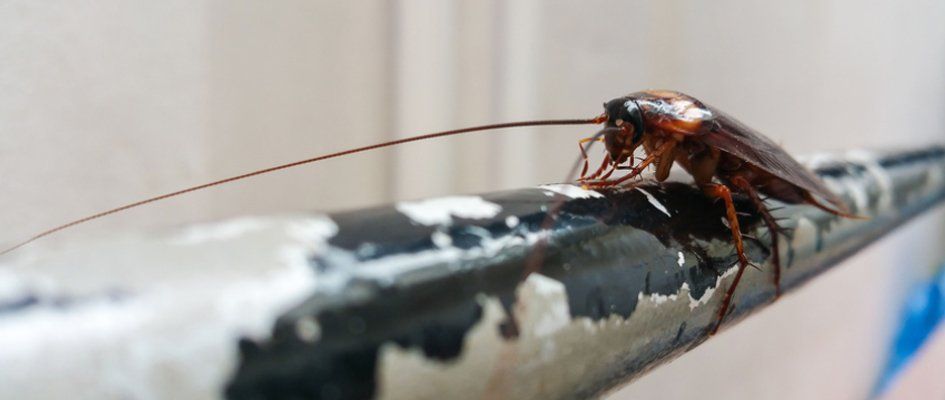
Cockroaches
Cockroaches may become pests in homes, restaurants, hospitals, warehouses, offices and virtually any structure that has food preparation or storage areas. These pests are common even in the cleanest of crowded urban areas and older dwellings. They are found in all types of neighborhoods. The proteins found in cockroach saliva are particularly allergenic but the body and droppings of cockroaches also contain allergenic proteins. Cockroaches are one of the most common and allergenic of indoor pests. Recent studies have found a strong association between the presence of cockroaches and increases in the severity of asthma symptoms in individuals who are sensitive to cockroach allergens.
Foraging or feeding cockroaches also spread human disease by depositing disease organisms on food, dishes, or other items. They contaminate food and eating utensils, destroy fabric and paper products, and impart stains and unpleasant odors to surfaces they contact. Cockroaches (especially the American cockroach, which comes into contact with human excrement in sewers or with pet droppings) may transmit bacteria that cause food poisoning (Salmonella spp. and Shigella spp.). German cockroaches are believed to be capable of transmitting disease-causing organisms such as Staphylococcus spp., Streptococcus spp., hepatitis virus and coliform bacteria. They also have been implicated in the spread of typhoid and dysentery.
Life Cycle
Cockroaches grow and mature by gradual metamorphosis. There are three stages in the life cycle: egg, nymph, and adult. Generations overlap, so all stages may be found at any time of year. Females deposit eggs in bean-shaped or purse-like leathery egg cases called oothecae. These are dropped or attached to out-of-the-way places by the females shortly after their formation. Egg cases of the various species are quite distinctive and may be used as an aid in determining what species are involved in an infestation.
The nymphs which hatch from the eggs resemble the adults, except that they are smaller, have undeveloped wings, and frequently are a somewhat different color. Nymphs develop rather slowly, growing by progressive stages, each stage terminated by molting of the skin which permits the insect to increase in size. Nymphs may molt 5-13 times before transforming into adults, the number depends upon the species and local conditions.
Prevention
Prevention is the key to successful cockroach control. Preventive measures will minimize cockroach invasion of buildings and eliminate or greatly reduce availability of food, water, and shelter. It is much easier and usually less costly to keep cockroaches on the outside than it is to get rid of them once inside.
These insects can be discouraged from entering buildings by sealing any cracks of 1/8 inch or more in foundations and exterior walls. The seal around air conditioners, doors, windows, and other structural openings should be examined to ensure that there are no gaps which permit cockroach entry. Refuse should be stored in durable, securely covered containers and not kept next to a building. Incoming merchandise such as beverage cartons, groceries, dry cleaning, luggage and used appliances or furniture should be inspected for hitchhiking cockroaches and/or their egg cases.
Inside a dwelling, all cockroach hiding areas and food sources should be eliminated. Cracks and holes in floors, walls, and ceilings should be repaired and openings around plumbing fixtures, furnace flues, electrical outlets, between windowsills and walls, and along baseboards or ceiling moldings should be sealed. Leaky water faucets and pipes should be repaired.
Sanitation or cleanup will aid considerably in cockroach control. Unwashed dishes, kitchen utensils and exposed food products should not be left overnight. All spilled liquids should be cleaned up. Areas beneath cabinets, furniture, sinks, stoves, and refrigerators should be cleaned often, as should cupboards, pantry shelves and storage bins where tiny particles of food frequently accumulate. Kitchen wastes and dry pet food should be kept in cockroach-proof containers. If pets are fed indoors, leftover food should not be allowed to remain in the feeding dish overnight. Accumulations of stored papers, boxes or other nonessential items should be disposed of since these items provide excellent hiding and breeding sites for cockroaches.

Spiders
Most spiders are small, inconspicuous arthropods which are harmless to humans. Very few of the nearly 900 species of spiders in Alabama can hurt people. Only two groups – recluse spiders and widow spiders-- are considered poisonous to humans.
Tarantulas, jumping spiders, wolf spiders and some other spiders worry people who mistakenly believe they are seriously poisonous. Although these spiders are often large, hairy and formidable-looking, their bite is typically less harmful than a bee sting. People who are extremely allergic to spider venom, though, react severely to any spider bite.
Many people have a phobia of spiders. However, knowing how to distinguish harmless from dangerous spiders, how to prevent them from entering the home and how to control those that do enter can prevent needless concern and reduce the chances of harm to humans.
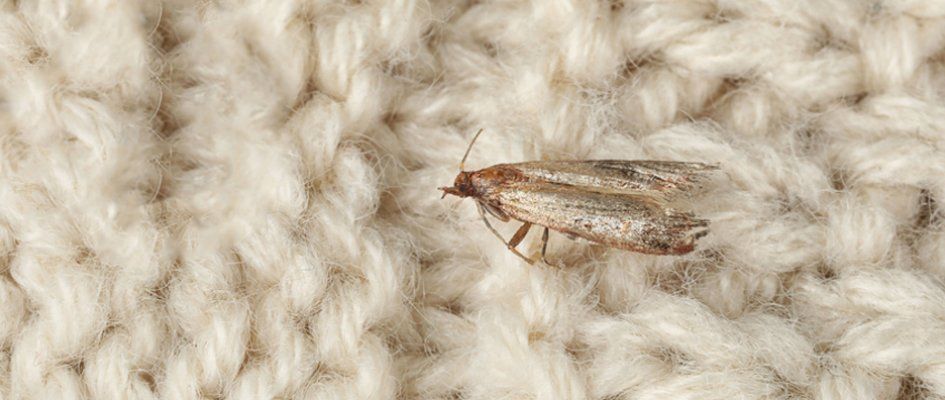
Pantry Pests
There are many insects – particularly moths and beetles – that feed on and contaminate cereals, grains, nuts, dried fruits, spices and processed foods.
Where do these infestations come from? Some products might already be infested when we buy them. For example, an all-too-easy way to start an Indian meal moth infestation is to purchase bird seed and bring it home. It is often infested when we buy it – just wander through the pet store and notice the little moths flying in the bird seed aisle. The extra protein won't hurt birds, but once inside the home it is very easy for the infestation to spread to other stored foods in the pantry. Another scenario is for insects to enter through window screens and find their way into the pantry.
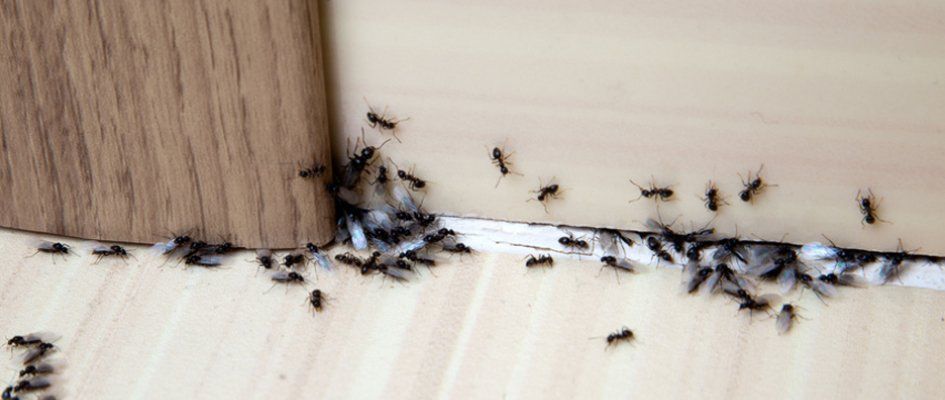
Occasional Invaders
As the name indicates, occasional invaders are nuisance pests that are not usually found to nest in or infest homes or household products. These pests enter the home usually by accident. Most of them do not do damage to your home or belongings.
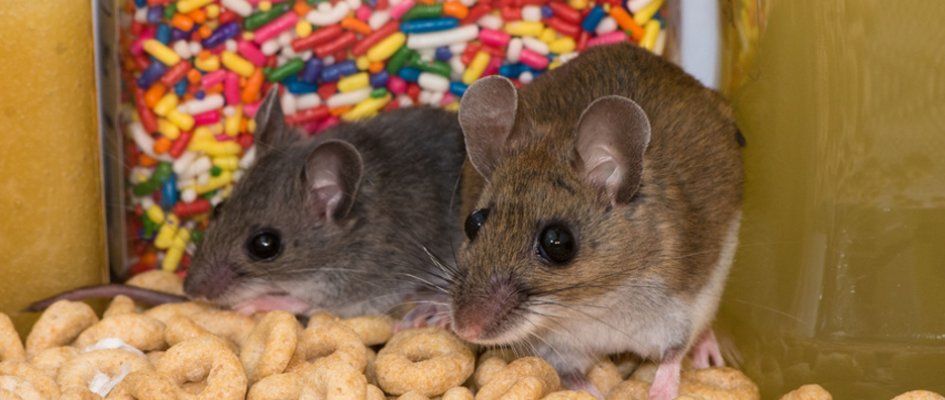
Rodents
Food and shelter are the primary reasons for rats and mice to enter a home. Three types of common rodents are the Roof Rat, Norway Rat and House Mouse. When invading a structure they are a double threat. The first threat is extensive damage to food and structures as well as stored clothing and documents. The second threat is that they are also carriers of many diseases which include: Rat-bite fever, Leptospirosis (Weil's Disease), Murin Typhus, Rickettsial Pox, Plague, Trichinosis, Typhoid, Dysentery, Salmonellosis, Hymenolepis Tapeworms, Lymphocytic Choriomeningitis and Rabies.
SERVING
and Surrounding Areas

Share On: